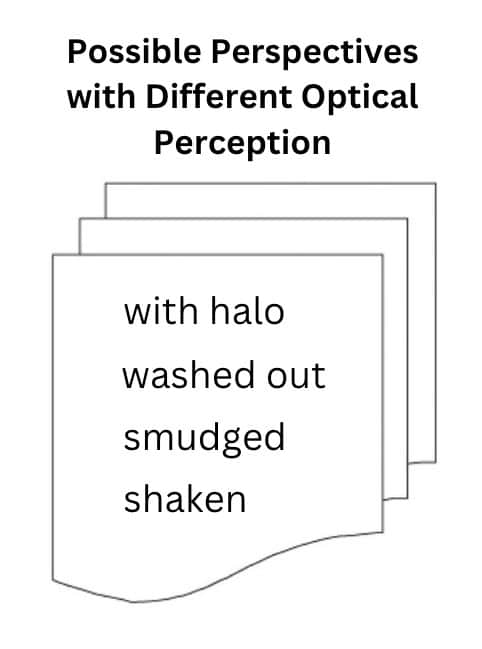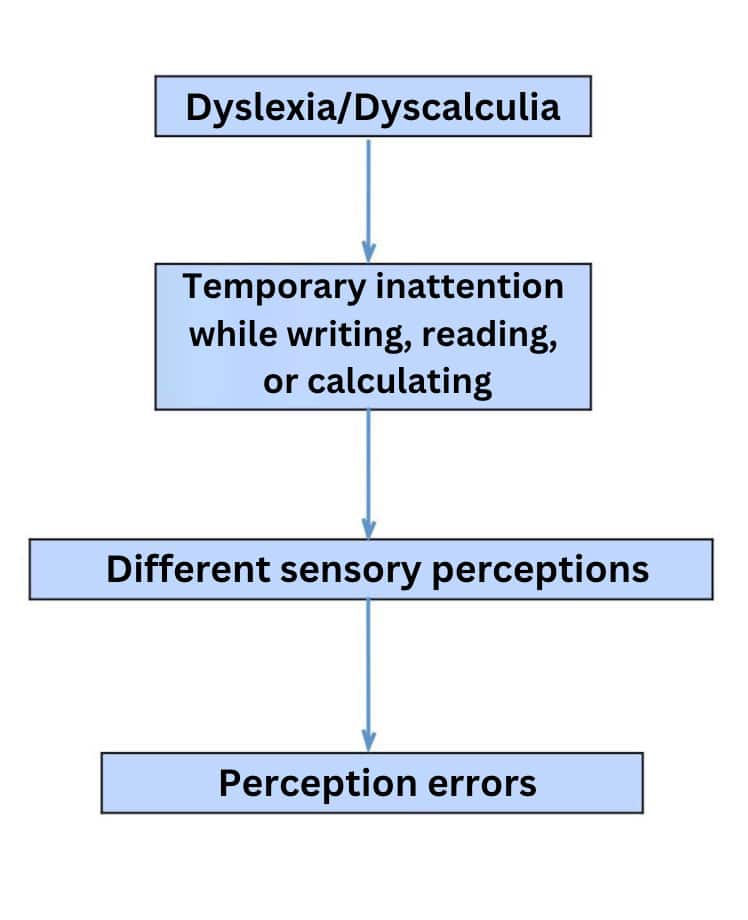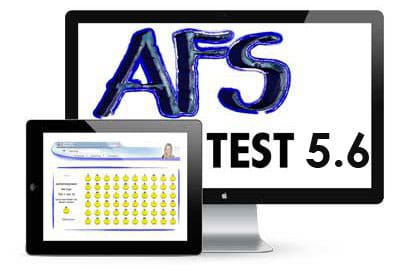Possible perspectives of dyslexic people
“To visually illustrate to everyone how a dyslexic person sometimes optically perceives written text, American scientists have tried to represent this. Without such examples, it would be very difficult for a non-dyslexic person to imagine these perspectives.”
Dr. Astrid Kopp-Duller

After dealing with these images and recognizing that these are not just poor copies, one can perhaps get a better idea of how dyslexic people sometimes perceive:




Affected individuals have particular difficulties dealing with symbols and abstract things when they appear flat. In contrast, anything that appears physical or three-dimensional is grasped without problems. One could also take binoculars, hold them backwards, and try to step over obstacles. One would notice how difficult this undertaking is and how perception suddenly changes.
But vision is only one of several sensory perceptions that can be experienced differently by a dyslexic/dyscalculic person. It can also function well, like in other people, and be completely intact.
If a child has problems with optical differentiation, they lack the ability to filter out minor differences. Optical things that look similar are not recognized as unequal, for example, h and k or o and a are seen as the same. This naturally leads to errors automatically. Children with altered optical differentiation also cannot read moods from the faces of others and are therefore often completely surprised by overreactions from the teacher.
Visual, auditory, and spatial sensory perception, partial performances or also called functions – the abilities with which people perceive the environment – play an essential role in learning to write, read, or calculate. Dyslexic and dyscalculic people have a special way of processing information and therefore also a special learning ability.

Why do dyslexic / dyscalculic children show so-called performance failures?
Are they not simply too stupid to understand writing and reading or arithmetic? No! The visual, auditory or spatial awareness must be strengthened in dyslexic and dyscalculic people. The reason why these people perceive letters or digits differently is that brain functions work differently. This, in turn, has nothing to do with the individual intelligence of the respective person.
“Albert Einstein is probably the best example of this. As a severe dyslexic who laboriously learned to write and read, he was considered a ‘dummy’ until it was discovered that he possessed exceptionally above-average mathematical thinking. Of course, not every dyslexic person has an Einstein inside them, but these people certainly deserve more attention and recognition than has been the case so far!”
Dr. Astrid Kopp-Duller (Book: The Dyslexic Person)
“Although dyslexia or dyscalculia exists for a lifetime, it can be overcome!”
Dr. Astrid Kopp-Duller

